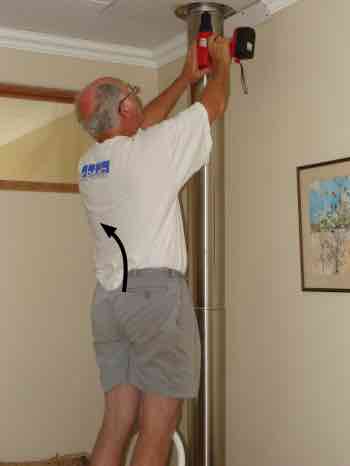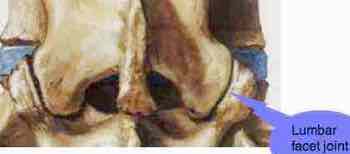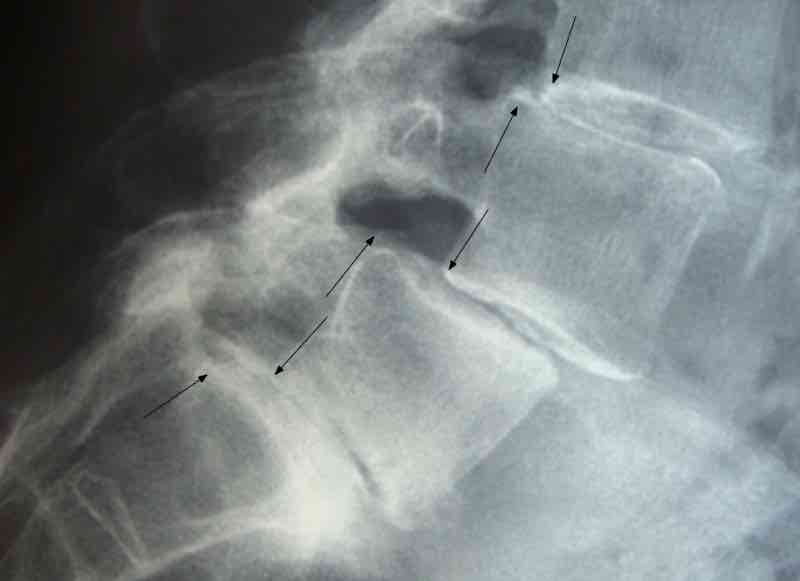- Home
- Lower back exercises
- Lumbar extension
Lumbar extension
Lumbar extension is a vital part of the mobility of your lower back.
If you can't bend into extension and to the side, you will be stooped forwards long before your time.
You will often see older folk, and some not so elderly, walking as though they are stuck in a flexed position. Bending forwards as in picking something off the floor is usually painless, but extension causes immediate discomfort in the lower back and perhaps down the leg.

This may be due to Parkinson's disease but more usually because of severe wear and tear in the facet joints in the lower back.
So the chronic loss of extension is more common in the older person; and more usually affects the mid lower-back and the femoral nerve. That would cause pain on the side and front of the thigh and the inner lower leg.
Of course the sciatic nerve can be affected too; and sometimes both.
There is a solution; lumbar extension exercises. However they must be done with great circumspection and I of course would recommend that you do it under the direction of your chiropractor.
Not just because I'm trying to chisel your hard-earned dollars out of your wallet, but because this action done incorrectly can provoke a nasty pinched nerve. Do these exercises mindfully.

Lumbar extension
The lumbar facet joints mediate lower back extension.
After a serious slipped disc, the upper vertebra settles lower on its mate below; this means that the facets start to ride on one another causing degenerative change.
The secret is to exercise those facet joints gently into lumbar extension daily. Do it forcibly and you will set up a pinched nerve and pain down your leg. If you do not work them you'll end up stooped forwards, looking like an old man long before your time.
The facet joints are lined with hyaline cartilage; they are bathed in synovial fluid which must be replenished daily. Movement provides the pump that drives fresh nutrients and removes the waste products of cell metabolism.
In my book and, busy on my seventy-fifth orbit of the sun, this chiropractor has been around the block a good few times; a disciplined daily lower back exercise programme is vital for those suffering from chronic LBP. I do them myself, having had severe femoral nerve damage a few years ago. I was lucky to escape the knife, thanks to excellent care from a colleague; my daughter.

The worst that can happen is that the lower facet changes shape to such an extent that it allows the upper vertebra to slide forwards, catching the nerve root in a pincer; it is known as an anterolysthesis. All in all, it is best to mobilise those joints to keep them healthy.
In between acute episodes of lower back pain, when you will most likely need a course of chiropractic adjustments, that's the time to mobilise your facets at home on a daily basis using these lumbar extension exercises.
Tomorrow I will add some photographs of the exercises.
Yes that is me up the ladder drilling holes to hold that escutcheon plate in place around the flue. Notice how my back is in extension; it was exactly this posture that set off a severe case of femoral nerve neuropathy in a patient recently. He had no back pain, just severe anterior thigh pain and weakness of the knee. He was lucky to escape surgery with chiropractic help.
A woodstove heating system with a flue passing through the bedroom above by the way is a wonder in any home.
This is the stove downstairs in the lounge; the chimney passes through the bedroom above. It's magic.
We have no need of central heating in our home; this little baby warms the whole house.

Useful links
When browsing these links use right click and "Open Link in New Tab", or you may get a bad gateway signal.
- Home
- Lower back exercises
- Lumbar extension
Did you find this page useful? Then perhaps forward it to a suffering friend. Better still, Tweet or Face Book it.
